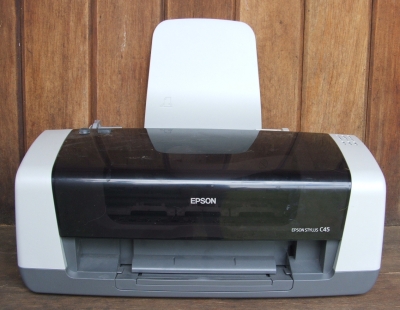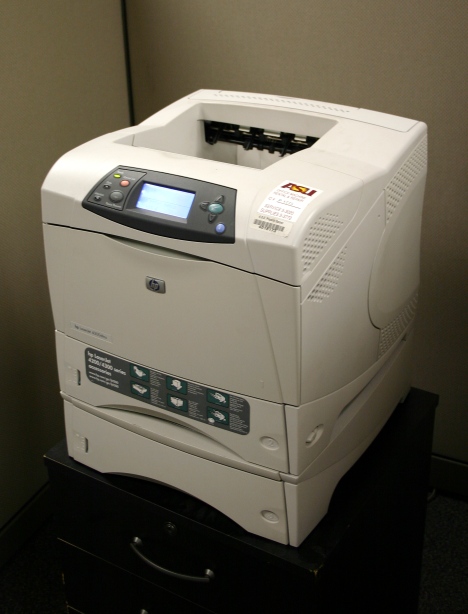|
Stone Paper
Stone paper products, also referred to as bio-plastic paper, mineral paper or rich mineral paper, are strong and durable paper-like materials manufactured from calcium carbonate bonded with high-density polyethylene (HDPE) resin. They are used in many of the same applications as cellulose-based paper. Properties Stone paper has a density range of 1.0-1.6g/cm3, which is equal to or slightly higher than that of ordinary paper, and a texture somewhat like that of the outer membrane of a boiled egg. It is not biodegradable or compostable, but is photo-degradable under suitable conditions. It consists of roughly 80% calcium carbonate, 18% HDPE and 2% proprietary coating. Because it is not made from cellulose fibers, stone paper can have a smoother surface than most traditional products, eliminating the need for additional coating or lamination. The calcium carbonate is mined from quarries or precipitated from limestone. The production of stone paper uses no acid, bleach Bleach ... [...More Info...] [...Related Items...] OR: [Wikipedia] [Google] [Baidu] |
High-density Polyethylene
High-density polyethylene (HDPE) or polyethylene high-density (PEHD) is a thermoplastic polymer produced from the monomer ethylene. It is sometimes called "alkathene" or "polythene" when used for HDPE pipes. With a high strength-to-density ratio, HDPE is used in the production of plastic bottles, corrosion-resistant piping, geomembranes and plastic lumber. HDPE is commonly recycled, and has the number "2" as its resin identification code. In 2007, the global HDPE market reached a volume of more than 30 million tons. Properties HDPE is known for its high strength-to-density ratio. The density of HDPE ranges from 930 to 970 kg/m3. The standard method to test plastic density is ISO 1183 part 2 (gradient columns), alternatively ISO 1183 part 1MVS2PRO density analyzer. Although the density of HDPE is only marginally higher than that of low-density polyethylene, HDPE has little branching, giving it stronger intermolecular forces and tensile strength (38 MPa versus 21 MPa) than ... [...More Info...] [...Related Items...] OR: [Wikipedia] [Google] [Baidu] |
Photodegradation
Photodegradation is the alteration of materials by light. Commonly, the term is used loosely to refer to the combined action of sunlight and air, which cause oxidation and hydrolysis. Often photodegradation is intentionally avoided, since it destroys paintings and other artifacts. It is, however, partly responsible for remineralization of biomass and is used intentionally in some disinfection technologies. Photodegradation does not apply to how materials may be aged or degraded via infrared light or heat, but does include degradation in all of the ultraviolet light wavebands. Applications Foodstuffs The protection of food from photodegradation is very important. Some nutrients, for example, are affected by degradation when exposed to sunlight. In the case of beer, UV radiation causes a process that entails the degradation of hop bitter compounds to 3-methyl-2-buten-1-thiol and therefore changes the taste. As amber-colored glass has the ability to absorb UV radiation, beer bottles ar ... [...More Info...] [...Related Items...] OR: [Wikipedia] [Google] [Baidu] |
Acid
In computer science, ACID ( atomicity, consistency, isolation, durability) is a set of properties of database transactions intended to guarantee data validity despite errors, power failures, and other mishaps. In the context of databases, a sequence of database operations that satisfies the ACID properties (which can be perceived as a single logical operation on the data) is called a ''transaction''. For example, a transfer of funds from one bank account to another, even involving multiple changes such as debiting one account and crediting another, is a single transaction. In 1983, Andreas Reuter and Theo Härder coined the acronym ''ACID'', building on earlier work by Jim Gray who named atomicity, consistency, and durability, but not isolation, when characterizing the transaction concept. These four properties are the major guarantees of the transaction paradigm, which has influenced many aspects of development in database systems. According to Gray and Reuter, the IBM Informa ... [...More Info...] [...Related Items...] OR: [Wikipedia] [Google] [Baidu] |
Bleach
Bleach is the generic name for any chemical product that is used industrially or domestically to remove color (whitening) from a fabric or fiber or to clean or to remove stains in a process called bleaching. It often refers specifically, to a dilute solution of sodium hypochlorite, also called "liquid bleach". Many bleaches have broad spectrum bactericidal properties, making them useful for disinfecting and sterilizing. They are used in swimming pool sanitation to control bacteria, viruses, and algae, and in many places where sterile conditions are required. They are also used in many industrial processes, notably in the bleaching of wood pulp. Bleaches also have other minor uses like removing mildew, killing weeds, and increasing the longevity of cut flowers. Bleaches work by reacting with many colored organic compounds, such as natural pigments, and turning them into colorless ones. While most bleaches are oxidizing agents (chemicals that can remove electrons from other ... [...More Info...] [...Related Items...] OR: [Wikipedia] [Google] [Baidu] |
Inkjet Printing
Inkjet printing is a type of computer printing that recreates a digital image by propelling droplets of ink onto paper and plastic substrates. Inkjet printers were the most commonly used type of printer in 2008, and range from small inexpensive consumer models to expensive professional machines. By 2019, laser printers outsold inkjet printers by nearly a 2:1 ratio, 9.6% vs 5.1% of all computer peripherals. The concept of inkjet printing originated in the 20th century, and the technology was first extensively developed in the early 1950s. While working at Canon in Japan, Ichiro Endo suggested the idea for a "Bubble jet" printer, while around the same time Jon Vaught at HP was developing a similar idea. In the late 1970s, inkjet printers that could reproduce digital images generated by computers were developed, mainly by Epson, Hewlett-Packard (HP) and Canon. In the worldwide consumer market, four manufacturers account for the majority of inkjet printer sales: Canon, HP, Eps ... [...More Info...] [...Related Items...] OR: [Wikipedia] [Google] [Baidu] |
Solid Ink
Solid ink (also referred to as hot melt ink) is a type of ink used in printing. Solid ink is a waxy resin-based polymer that must be melted prior to usage unlike conventional liquid inks. The technology is used most in graphics and large format printing environments where color vividness and cost efficiency are important. History Solid ink, Hot-Melt or Phase change ink was introduced in 1962 at Teletype Corporation in the Project 176. Solid ink is the name for ink that is solid at room temperature. Wax was formally introduced in the first Solid ink product introduced with Continuous Inkjets in the Teletype Inktronic Terminal in 1966 but the patent for Hot-melt wax did not issue until Patent US3653932 April 4, 1972. In 1971, a patent, US3596285 was issued for a Liquid Metal Recorder, a printer process that fabricated metal models of symbols, patterns and characters. Liquid metal was referred to as Hot-Melt "type" ink in this patent and it was introduced before the term 3D p ... [...More Info...] [...Related Items...] OR: [Wikipedia] [Google] [Baidu] |
Laser Printers
Laser printing is an electrostatic digital printing process. It produces high-quality text and graphics (and moderate-quality photographs) by repeatedly passing a laser beam back and forth over a negatively-charged cylinder called a "drum" to define a differentially-charged image. The drum then selectively collects electrically-charged powdered ink (toner), and transfers the image to paper, which is then heated to permanently fuse the text, imagery, or both, to the paper. As with digital photocopiers, laser printers employ a xerographic printing process. Laser printing differs from traditional xerography as implemented in analog photocopiers in that in the latter, the image is formed by reflecting light off an existing document onto the exposed drum. Invented at Xerox PARC in the 1970s, laser printers were introduced for the office and then home markets in subsequent years by IBM, Canon, Xerox, Apple, Hewlett-Packard and many others. Over the decades, quality and speed have i ... [...More Info...] [...Related Items...] OR: [Wikipedia] [Google] [Baidu] |
Paper
Paper is a thin sheet material produced by mechanically or chemically processing cellulose fibres derived from wood, rags, grasses or other vegetable sources in water, draining the water through fine mesh leaving the fibre evenly distributed on the surface, followed by pressing and drying. Although paper was originally made in single sheets by hand, almost all is now made on large machines—some making reels 10 metres wide, running at 2,000 metres per minute and up to 600,000 tonnes a year. It is a versatile material with many uses, including printing, painting, graphics, signage, design, packaging, decorating, writing, and cleaning. It may also be used as filter paper, wallpaper, book endpaper, conservation paper, laminated worktops, toilet tissue, or currency and security paper, or in a number of industrial and construction processes. The papermaking process developed in east Asia, probably China, at least as early as 105 CE, by the Han court eunuch Cai Lun, although the ... [...More Info...] [...Related Items...] OR: [Wikipedia] [Google] [Baidu] |
Materials
Material is a substance or mixture of substances that constitutes an object. Materials can be pure or impure, living or non-living matter. Materials can be classified on the basis of their physical and chemical properties, or on their geological origin or biological function. Materials science is the study of materials, their properties and their applications. Raw materials can be processed in different ways to influence their properties, by purification, shaping or the introduction of other materials. New materials can be produced from raw materials by synthesis. In industry, materials are inputs to manufacturing processes to produce products or more complex materials. Historical elements Materials chart the history of humanity. The system of the three prehistoric ages (Stone Age, Bronze Age, Iron Age) were succeeded by historical ages: steel age in the 19th century, polymer age in the middle of the following century (plastic age) and silicon age in the second half of the ... [...More Info...] [...Related Items...] OR: [Wikipedia] [Google] [Baidu] |





